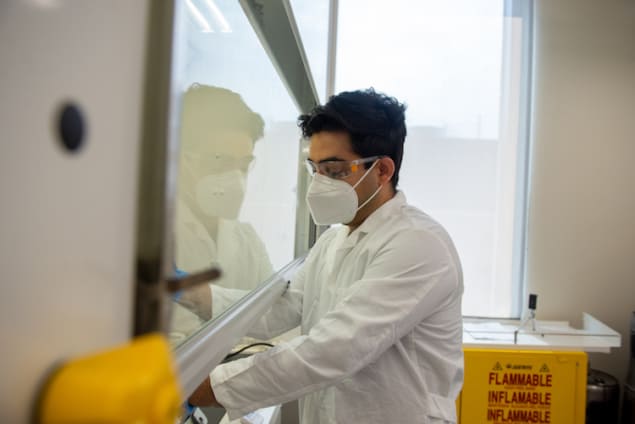Hairy nanoparticles could reduce chemotherapy side effects
14 Feb 2022 Isabelle Dumé

A new class of nanomaterials engineered to “capture” wayward chemotherapy drugs before they damage healthy tissue could reduce the side effects of cancer drugs during and after treatment. The nanomaterials are based on “hairy” cellulose nanocrystals, and members of the team that developed them say that one gram of these crystals can capture more than 6000 mg of a widely used chemotherapy drug, doxorubicin (DOX), making them 320 times as effective as alternative DNA-based materials.
At some point in our lives, nearly 40% of us will be diagnosed with cancer. While standard chemotherapy drugs are very good at killing many types of cancer cells, they also affect healthy cells, leading to side effects that can include anaemia, hair loss, repeated infections, jaundice and fever.
To reduce these so-called off-target effects, cancer researchers are seeking ways to decrease the concentration of the drugs circulating in the blood during and after treatment. In recent years, they have pursued several strategies, including the use of external catheter-like devices comprising a nylon mesh cylinder filled with an ion exchange resin as well as DNA-coated magnetic nanoparticles and polymers that are inserted into the body.
The problem with external devices is that despite their relatively large size, they only remove a small amount of DOX from blood (around a few micrograms per milligram of adsorbent within several minutes). To remove physiologically relevant concentrations of DOX, they would need be made even larger – up to 0.5 m – which would be uncomfortable for patients. Highly charged nanoparticles containing functional groups that may bind to chemotherapy drugs are thus an attractive alternative. The complex composition of blood, however, means that these nanoparticles may lose their charge. And while uncharged molecules such as polyethylene glycol have been widely used to protect nanoparticles in blood via mechanisms known as steric repulsion, they also reduce the drug-binding affinity of the nanoparticles.
Negatively charged “hairs”
A team at Pennsylvania State University in the US has now found a way around this problem. Led by Amir Sheikhi, an assistant professor of chemical and biomedical engineering and the founding director of the Bio-Soft Materials Laboratory (B-SMaL), members of the team applied a chemical treatment to cellulose fibrils to break them down into nanocrystals that are then sandwiched between layers of disordered cellulose regions. These disordered “hairs”, which are in fact clusters of highly functionalized polymer chains, significantly increase the nanocrystals’ capacity for capturing off-target drugs. Indeed, the researchers found that a gram of these nanocrystals could remove more than 6000 mg of DOX from human serum, which is the protein-rich part of blood that lacks red or white blood cells or platelets.READ MORE

And that was not all: the researchers report that the nanomaterials were robust to the ionic composition of blood, did not harm red blood cells in whole blood, and did not affect cell growth (as tested in human umbilical vein endothelial cells).
Looking forward, the researchers, who report their work in Materials Today Chemistry, say they now plan to develop devices based on these nanoparticles for use in the minimally invasive removal of unwanted substances from the body.

Isabelle Dumé is a contributing editor to Physics World
from physicsworld.com 15/2/2022
Δεν υπάρχουν σχόλια:
Δημοσίευση σχολίου